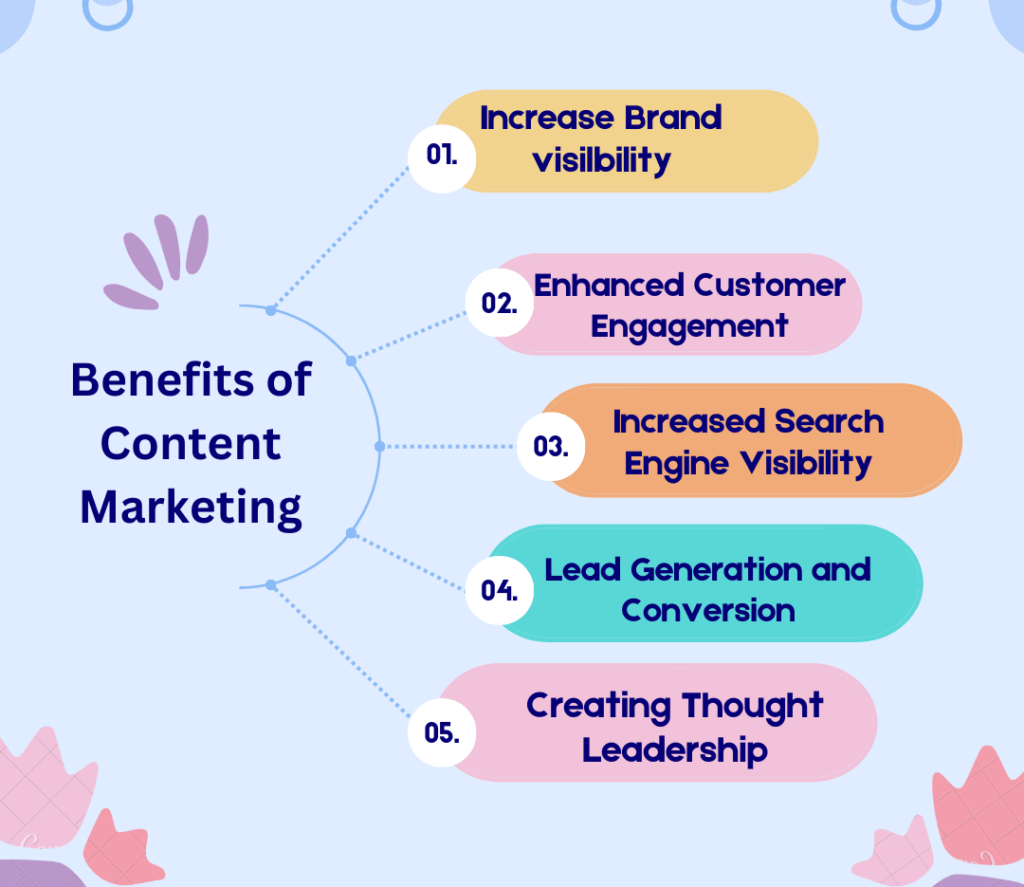Using content marketing as a tactic, companies produce and disseminate interesting information to draw in and interact with their target market. Content marketing uses social media, blogs, and videos to educate, amuse, and motivate. The core of content marketing is examined in this introduction, which focuses on meaningful and real customer connections. Come along as we dissect the methods and approaches that propel effective content marketing initiatives.
The Significance of Content Marketing
In today’s digital world, content marketing is important since it can successfully engage and impact target audiences. Here are several main justifications for the importance of content marketing
Effective Content Marketing Strategy
A content marketing plan must be implemented with a methodical approach that includes many crucial elements in order to be successful. Whether the campaign’s purpose is to increase website traffic, generate leads, drive income, or build brand awareness, it all starts with well defined goals and objectives. After defining these goals, the following stage is to conduct in-depth research to get a comprehensive knowledge of your target audience. To design material that speaks to their needs and interests, this entails figuring out their traits, preferences, difficulties, and behaviours.
The content plan needs to describe distinct pillars, themes, messaging, and a consistent tone of voice for your material. It should also describe the categories of content you’ll produce, like blogs, videos, and infographics, and the channels you’ll employ, including email, social media, and websites. A content schedule that specifies release dates and channels also helps to keep audiences engaged and maintains consistency.
When it comes to content development, concentrate on creating excellent content that aligns with your strategy and appeals to your intended audience. Make sure your material is educational, thoroughly researched, pertinent to the needs and interests of your audience, and entertaining and engaging all at the same time. You can create an efficient content marketing strategy that benefits your company by following these steps and maintaining a strategic mindset.

Benefits of Content Marketing

Drawbacks of content marketing
Even while content marketing has many advantages, it’s important to be aware of certain possible disadvantages:
Despite these limitations, when done well and strategically, content marketing can still be a very successful way to increase audience engagement, brand recognition, and business growth.
Conclusion
In summary, content marketing is an essential part of modern marketing strategies since it gives businesses a powerful tool for engaging, educating, and inspiring their target audiences. Organizations may build credibility, improve brand awareness, and foster long-lasting relationships with their customers by generating and sharing information that is consistent, useful, and relevant. Even while it does need time, effort, and ongoing commitment, content marketing has undeniable benefits in terms of increased customer interaction, higher brand exposure, and lead generating. Even in the face of content saturation and shifting digital landscapes, businesses that prioritize quality, uniqueness, and flexibility may utilize content marketing to generate noteworthy outcomes and achieve sustainable development in today’s competitive industry.
FAQ’s
What does content marketing mean to you?
The goal of content marketing is to attract in and keep an audience by producing and disseminating pertinent content. Emails, social media posts, podcasts, videos, and articles are examples of content.
Which seven stages make up content marketing?
Which 5 C’s apply to content marketing?
The 5 C’s of content marketing are clarity, conciseness, compellingness, credibility, and call to action. The first C in content marketing is clarity. Making your message as understandable and clear as you can is the key. Steer clear of technical terms and language.
What are the content marketing golden rules?
Connect, create, and share are the golden rules. To make sure you’re getting the most out of your efforts, there are three golden rules for content marketing.
What defines content marketing’s essential components?

